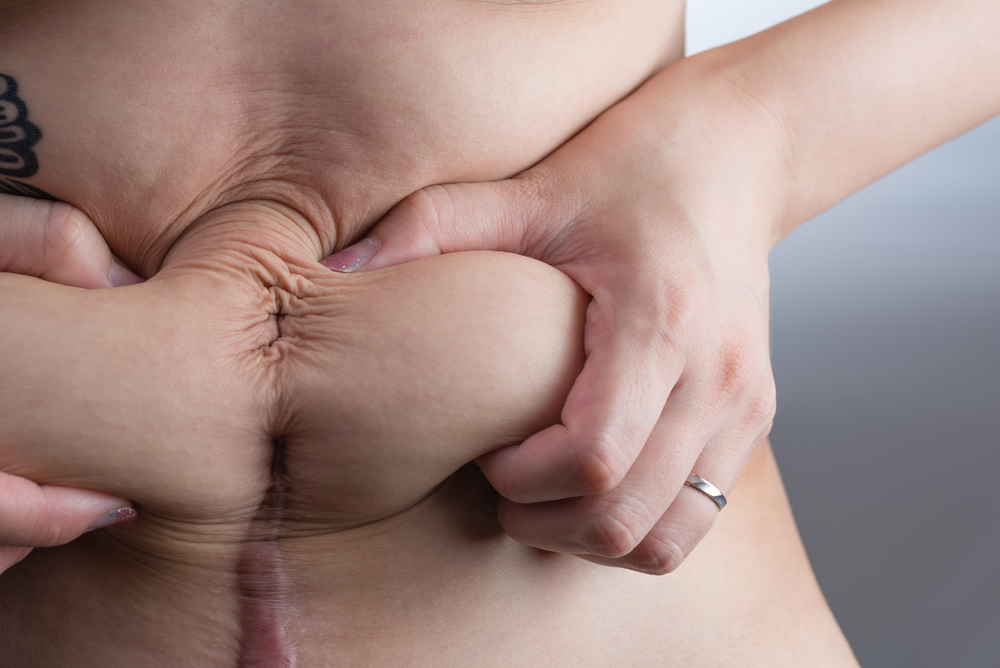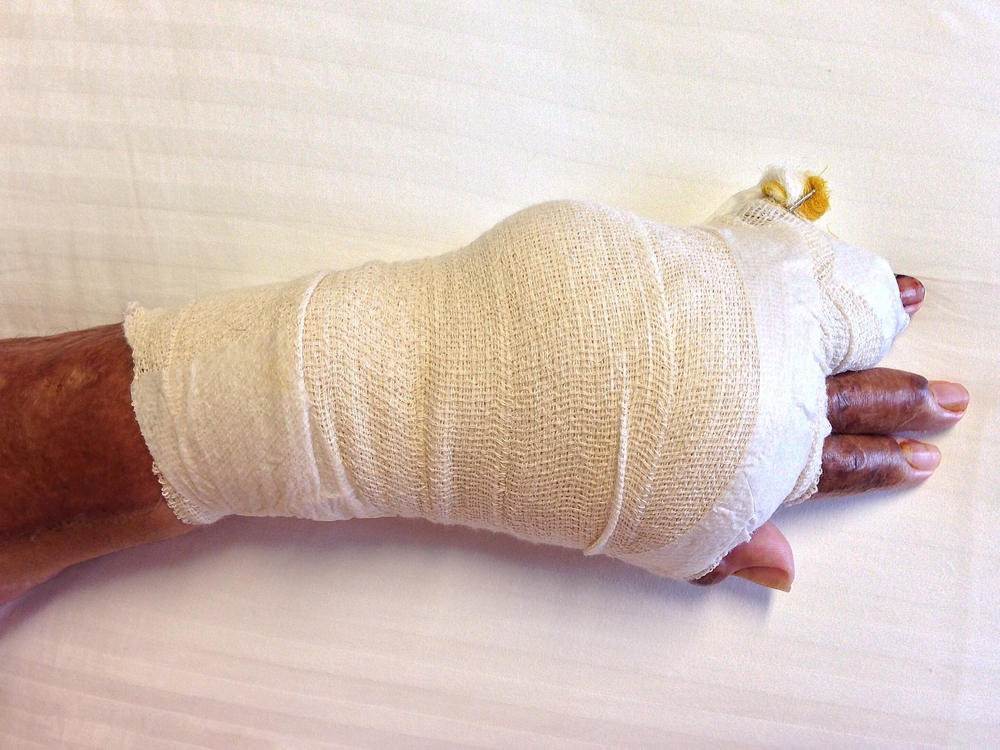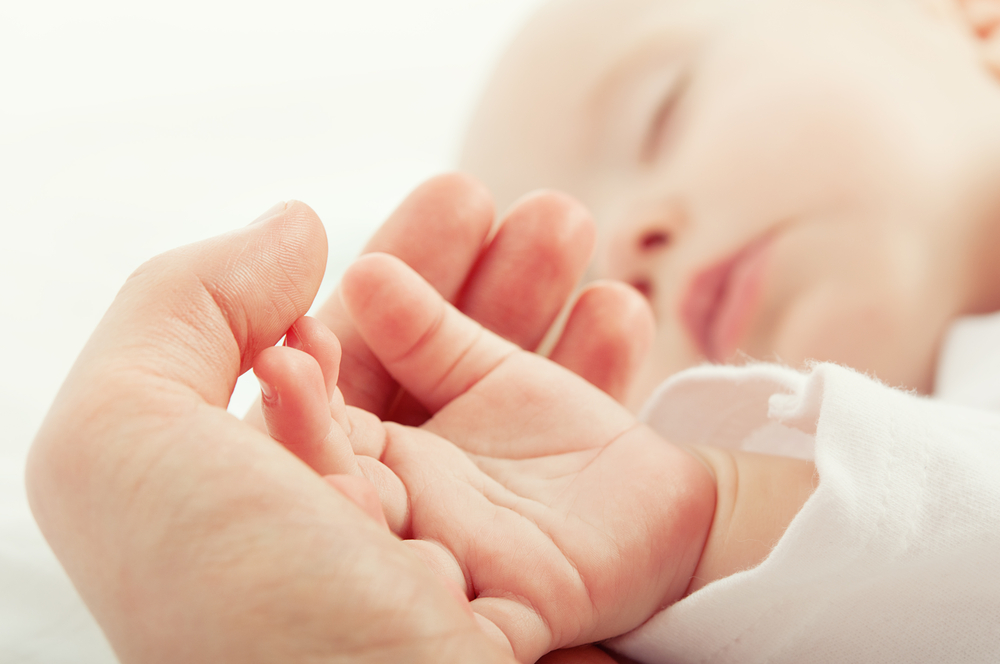Motherhood, as they say, is a blessing. However, pregnancy can leave your body with issues like weight gain and, if you had a cesarean section, the dreaded c-shelf.
If you recently gave birth by cesarean section, you might have noticed a puffy pouch of loose skin resting on or just above your surgery scar. This is what’s known as the c-section shelf, or cesarean pouch.
Unfortunately, unlike ‘baby fat,’ you can’t make this extra skin disappear, no matter how strict your diet or how strenuous an exercise routine you follow.
Here we discuss the surgical options available to address c-section scarring and the postpartum belly.
What exactly is the c-shelf?
To understand what’s happening to your body now, you first need to understand how your c-section affected you.
Contrary to the widespread perception, surgeons do not cut or excise any abdominal muscle while making horizontal C-section incisions. Instead, they cut through the skin, then the subcutaneous fat (the layer of fat beneath the skin), as well as the fascia. The fascia is a band of fibers made up of connective tissue that either separates or holds together muscles and organs in your abdomen.
When the surgery’s completed, you’re stitched back up and the fascia is left to heal on its own. How it heals depends on the individual.
As the c-shelf is comprised of puffy, unevenly-healed scar tissue, some women are left with a caterpillar-like red ridged scars, and others with a low-hanging belly shelf. A lucky few do come away scar- and shelf-free.
A c-shelf can differ from one woman to another, meaning that there is no one all-encompassing treatment. Women with raised scars are more likely to consider pursuing scar revision or various removal options.
Women with the puffy flap above their scar may not even realize it’s something that’s impossible to fix through exercise alone.
Will it go away on its own?
Women left with a sizable c-shelf immediately following surgery may discover that the scar will soften and the bulging will reduce with the passage of time.
However, there’s no guarantee this will happen in your case, nor is there a tried and true method to make it happen without medical intervention. It’s possible that your c-shelf could be around for years to come.
Diet and exercise, while effective in reducing postpartum fat, do not act on scar tissue. To be fair, some women have reported that a flatter belly in general has helped to reduce the appearance of their c-shelf.
However, others find that a flat belly only makes their c-shelf more pronounced. How diet and exercise affect a c-shelf ultimately depends on the shelf itself.
How do I get rid of my c-shelf?
There are surgical options available. Which one is best for you will depend on a variety of factors, including your weight, the placement of your scar and the nature of your c-shelf.
The following list will give you an idea of what each treatment entails. Naturally, you’ll want to consult with a plastic surgeon before making a final decision.
- Abdominoplasty (tummy tuck): This procedure is popular for post c-section belly woes and a common addition to the mommy makeover suite of services. Not only flattening your belly in general, it will smooth out the area affected by the c-shelf and may even remove the c-section scar entirely, depending on its placement.
- Mini tummy tuck: This procedure accomplishes much the same thing as the full tummy tuck but is concentrated on the lower abdomen. This is a good option for women who did not have excess weight to begin with and who have already lost a considerable amount of the baby weight.
- Scar revision or removal: Women whose c-shelf is concentrated on the incision point might be best served by a simple scar revision or removal. A surgeon might excise the scar entirely, allowing it to re-heal, or possibly blend the scar with the surrounding tissue.
Abdominoplasties come with their own scars, which raises an important question: Is a tummy tuck scar better than that of a c-section?
All scars heal in their own way, and there is no guarantee that the new scar will be any less noticeable than the old one. However, a tummy tuck will successfully remove the excess puffiness associated with your c-shelf, likely giving the scar a cleaner look. Though abdominoplasty scars tend to be longer, they are thinner than c-section scars.
What can I expect from an abdominoplasty?
An abdominoplasty can make your belly thinner and tighter by removing excess skin and fat. It can also firm up your muscles and the fascia connected to your abdomen.
It’s important to remember that abdominoplasty is major surgery. The procedure requires you to be fully anesthetized throughout, although there are rare occasions when patients are only partially sedated with an analgesic.
To begin, the skin is detached from the abdominal wall, giving the surgeon access to the fascia below. If the space between the left and right belly muscles has widened — a condition known as diastasis recti — the surgeon will use sutures to tighten the gap. The skin is then pulled taught and any excess is removed.
The surgery can last anywhere from one to four hours, depending on the type of abdominoplasty and whether or not liposuction is also performed as well.
Once the procedure has been completed, you will be bandaged and may have tubes inserted into your abdomen to drain excess fluids. You’ll also be given painkillers and possibly an antibiotic or anticoagulant to protect against infection and blood clotting.
The recovery from a tummy tuck may not seem all that different from that of a c-section. If your doctor recommended that you to walk after your c-section in order to avoid blood clots, the same will be required of you following this surgery.
Unfortunately, you will likely experience some major discomfort afterward and will need to take anywhere from one to four weeks off work to ensure a successful recovery. Depending on the type of abdominoplasty, healing could take up to six months.
Your surgeon will be able to answer all of your questions about risks and recovery time associated with the abdominoplasty that’s been recommended for you.
Is it worth it?
Only you can answer that question. Don’t let talk of a lengthy, painful recovery scare you. Abdominoplasty is a perfectly legitimate method of removing c-shelfs.
If you’re impatient and want to get your beach body back now, don’t assume that you can have plastic surgery on Monday and be bikini-ready by Friday. Even the best options take time.
Ask yourself how your c-shelf has affected your life. If it’s a question of getting your confidence and energy back, plastic surgery may be just the thing you need. Make sure you’ve weighed all the pros and cons beforehand and talk with your surgeon at length about your options and concerns.
What about at-home treatments?
Short of allowing your scar to soften or disappear on its own – which might never happen – there’s no way to resolve a c-shelf using home remedies. Once again, it’s not a weight issue.
You might come across an at-home scar treatment like silicone gel sheeting. This option may be effective in reducing the appearance of the visible surgical scar, but the “pouch” associated with the c-shelf is unlikely to be improved.
Remember that a c-shelf is caused by irregular healing of the fascia, meaning that some of the offending scarring is actually inside of you.
When can I get started?
First and foremost, be patient and cautious. Doctors will likely suggest that you can resume normal activities approximately eight weeks after your c-section. However, it may take six months or longer before you are fully healed. What’s more, what looks like a c-shelf right now could also disappear within a year of delivery.
Going back under the knife too soon after a c-section is, at worst, dangerous and, at best, unnecessary. Many plastic surgeons suggest waiting six months to a year after you stop breastfeeding before undergoing this surgery.
Don’t let the thought of having to wait so long get you down though. Very few things worth having come easily. That includes your new child and your perfect figure.









